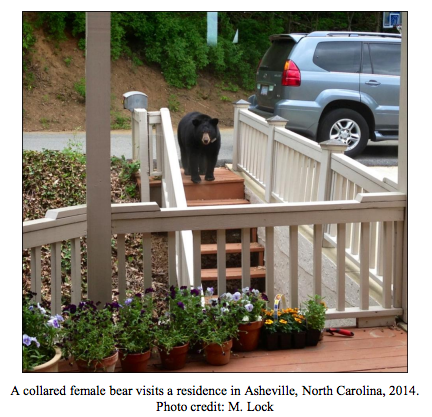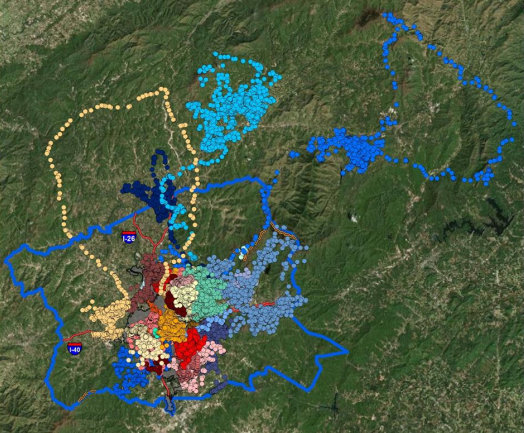 The North Carolina Wildlife Resources Commission and NC State University have wrapped up the first year of urban bear study in Asheville. The study was mentioned in Xpress’ Nov. 5 cover story “Taming the Wild: Urbanization Pits Humans Against Animals.”
The North Carolina Wildlife Resources Commission and NC State University have wrapped up the first year of urban bear study in Asheville. The study was mentioned in Xpress’ Nov. 5 cover story “Taming the Wild: Urbanization Pits Humans Against Animals.”
With three more seasons left in the field, this year began part one of the five-year research project designed to help the NCWRC “in developing science-based management strategies for urban-suburban bear populations in North Carolina,” reads a segment from The NC chapter of Wildlife Society’s newsletter, NC Wildlifer. “This project addresses and builds upon modern applications for managing large carnivores in urban areas and will be valuable to the larger scientific community.”
The fifth year will be used to analyze the data gathered in the field.
“While it is too early in the study to make any conclusions, we were impressed by the size and health of the yearling bears we handled,” reads a passage from the newsletter.
To read more about this study, scroll to page 6 of the Wildlife Society’s e-newsletter. Or, for more pictures and videos, follow the project directly on Facebook.
From NC Wildlifer:
This past summer was our first trapping season and from April through September, we captured 65 bears, including 10 recaptures, and collared 44 bears (24 adult females, 9 adult males, 5 yearling/subadult females, 6 yearling/subadult males). We identified 11 family groups among the captured bears; 3 family groups with yearlings, 8 groups with cubs. The average adult male (n = 10) and female (n = 24) bear weighed 316 lbs and 202 lbs, respectively. The average male (n = 13) and female (n = 8) yearling/subadult weighed 119 lbs and 103 lbs, respectively. The largest yearling we captured was a 163 lbs male. While it is too early in the study to make any conclusions, we were impressed by the size and health of the yearling bears we handled.
Their large size enabled us to place GPS collars on them, which allowed us to monitor the movements of entire family groups shortly before and after family-breakup. In comparison, in a long-term NCSU bear study on Pisgah National Forest, the average yearling weight was 65 lbs. Our largest bear captured was a 571.5 lbs adult male. We have collected approximately 150,000 GPS locations on bears (n = 44; Fig. 2), with 34 (77%) bears having locations inside Asheville city limits.





Before you comment
The comments section is here to provide a platform for civil dialogue on the issues we face together as a local community. Xpress is committed to offering this platform for all voices, but when the tone of the discussion gets nasty or strays off topic, we believe many people choose not to participate. Xpress editors are determined to moderate comments to ensure a constructive interchange is maintained. All comments judged not to be in keeping with the spirit of civil discourse will be removed and repeat violators will be banned. See here for our terms of service. Thank you for being part of this effort to promote respectful discussion.